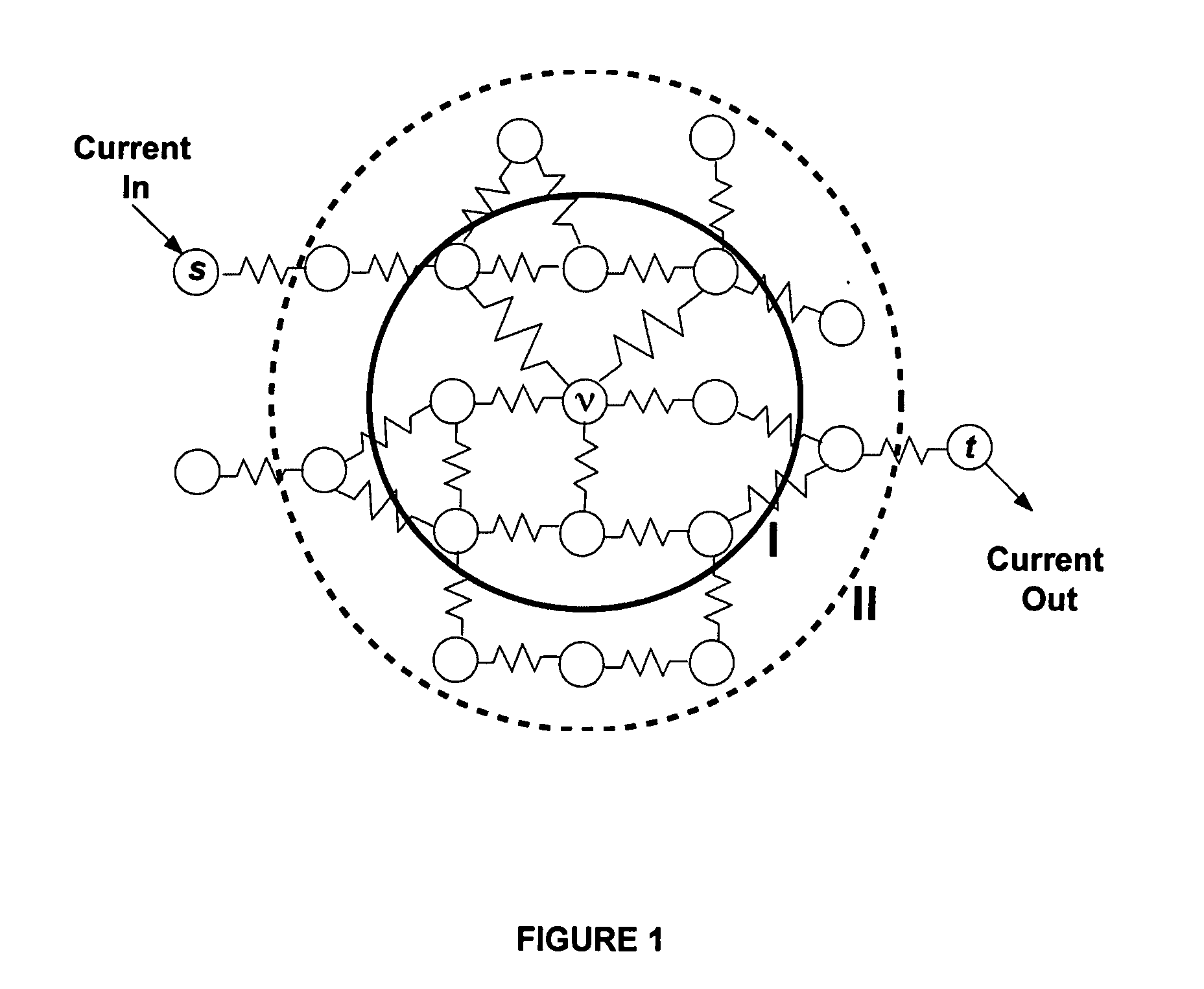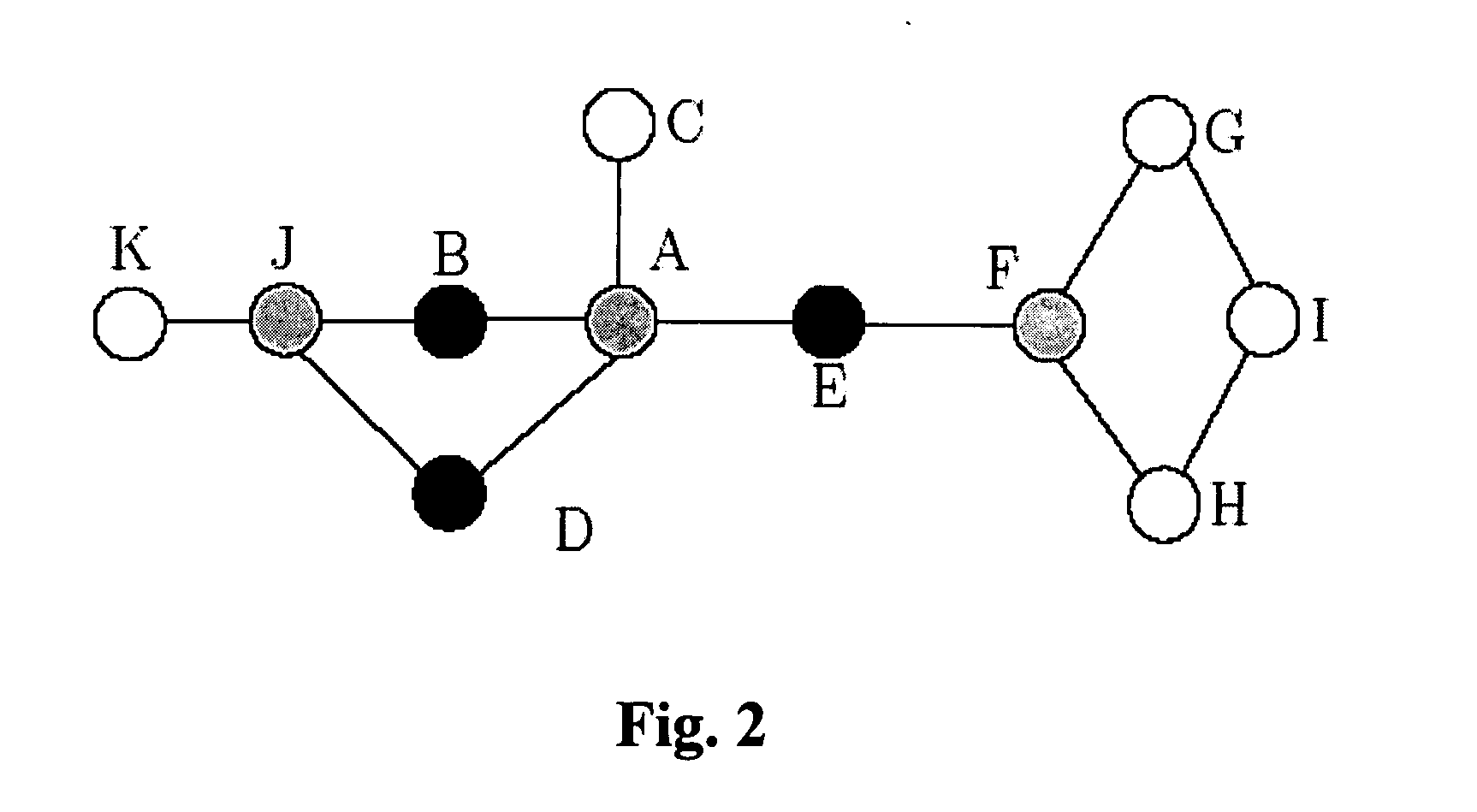Bridging centrality: a concept and formula to identify bridging nodes in scale-free networks
a network and node technology, applied in the field of identifying nodes in networks, can solve the problems that existing centrality measures cannot help being considerably dominated by nodes' degree, and achieve the effect of maintaining the structural integrity of the network
- Summary
- Abstract
- Description
- Claims
- Application Information
AI Technical Summary
Benefits of technology
Problems solved by technology
Method used
Image
Examples
Embodiment Construction
Terminology and Representation
[0029] Real world systems can be represented using graph theoretic methods. The approach presented focuses on undirected graphs. An undirected graph G=(V, E) consists of a set V of nodes or vertices and a set E of edges, E⊂V×V. An edge e(i,j) connects two nodes i and j, e(i,j)εE.
[0030] An undirected graph G={(V, E)| V is a set of nodes and E is a set of edges, E⊂V×V, an edge e=(i,j) connects two nodes i and j, i, jεV, eεE}. We investigated several diverse networks ranging from simulated data, social and biological networks to the Internet and the Worldwide Web. In the biological examples, the nodes in the biological network's graph representation are the various biomolecular species whose composition can range from biopolymers such as proteins, DNA, RNA to small molecules such as lipids, sugars and metabolites. The edges between the nodes represent an interaction between the underlying molecular species. Likewise, in the social networks, the nodes re...
PUM
 Login to View More
Login to View More Abstract
Description
Claims
Application Information
 Login to View More
Login to View More - R&D
- Intellectual Property
- Life Sciences
- Materials
- Tech Scout
- Unparalleled Data Quality
- Higher Quality Content
- 60% Fewer Hallucinations
Browse by: Latest US Patents, China's latest patents, Technical Efficacy Thesaurus, Application Domain, Technology Topic, Popular Technical Reports.
© 2025 PatSnap. All rights reserved.Legal|Privacy policy|Modern Slavery Act Transparency Statement|Sitemap|About US| Contact US: help@patsnap.com



